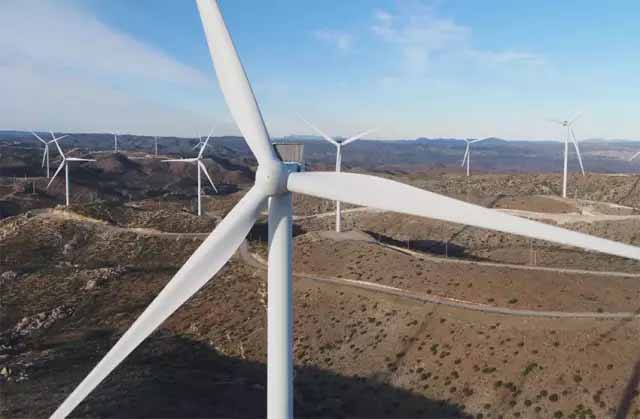The US utility signed a 20-year agreement to buy from a proposed wind farm in Mexico
by Mexico News Daily
The United States energy company Sempra intends to build a new wind farm in the Baja California municipality of Tecate, and already has a customer willing to buy the power it proposes to generate there.
Sempra Infrastructure (SI), a subsidiary of the San Diego-based firm, and Silicon Valley Power — a municipal electricity utility owned and operated by the city of Santa Clara, California — announced a 20-year power purchase agreement last Thursday.
The renewable energy is to be supplied to Santa Clara from “the proposed Cimarrón wind project, Sempra Infrastructure’s cross-border wind generation facility under development in Baja California,” SI said in a statement.
To be located less than 10 kilometers from the SI-operated Energía Sierra Juárez (ESJ) wind farm, “Cimarrón is expected to be a 300-megawatt (MW) wind generation facility,” the statement said, adding that clean energy would be delivered to a substation in San Diego County via Sempra Infrastructure’s existing cross-border high voltage transmission line.
“Cimarrón is being developed to include approximately 60 wind turbines with a capacity to produce enough energy equivalent to the annual energy consumption of more than 84,000 homes and is expected to reduce greenhouse gas emissions by nearly 210,000 metric tons of carbon dioxide equivalent per year,” SI said.
“The construction of the new facility is expected to create more than 2,000 direct and indirect jobs in Mexico with additional local community investment under Sempra Infrastructure’s framework for corporate giving as part of the company’s commitment to the communities where it operates,” the company said.
It added that the development of the planned project “is subject to a number of risks and uncertainties, including securing all necessary commercial agreements and permits and other factors, including reaching a final investment decision.”
Construction of the wind farm hasn’t yet commenced, but SI believes it could start generating power by the end of 2024.
CEO Justin Bird said the company is “excited to work with the City of Santa Clara, home to some of the world’s largest technology companies, to provide access to renewable energy that can help meet their energy demands while supporting their sustainable energy goals.”
SI’s agreement with Silicon Valley Power “underscores our commitment to advancing the development of our North American clean energy portfolio as we continue to help create a cleaner energy future,” he said.
Manuel Pineda, chief electric utility officer of Silicon Valley Power, said that the utility is “excited to partner with Sempra Infrastructure to add clean energy resources to help meet our sustainability and climate goals.”
SI didn’t say how much it intended to invested in the new project, but the outlay will likely be in the hundreds of millions of dollars. A total of US $450 million was spent on the two phases of the nearby 263-MW ESJ facility, which has 73 turbines.
SI operates another large wind farm in the Nuevo León municipality of General Bravo and a natural gas storage terminal in Ensenada, Baja California. The latter facility intends to start exporting gas to tap into growing global demand for the fuel.
SI also has plans to build a battery storage facility of up to 500 MW in Mexicali, Baja California, and an liquefied natural gas (LNG) export facility in Topolobampo, Sinaloa. The former is slated to serve California’s Imperial Valley, while the latter could ship gas to Asia.
The San Diego Union-Tribune reported that “export terminals on or near the Pacific are considered valuable because ships carrying LNG cargoes to natural gas-hungry markets in Asia can skip paying the tolls at the Panama Canal that facilities on the Gulf Coast must pay and can reach their destinations in about half the time.”
The federal government is planning to build a gas export hub in Coatzacoalcos, Veracruz, but that facility is slated to ship LNG to Europe rather than Asia. President López Obrador is increasing the state’s involvement in the energy sector, and his government has pursued a range of policies that are hostile to foreign firms, many of which generate renewable energy here.
Despite that, 17 United States energy companies have committed to invest in solar and wind projects in Mexico, the president said in June. Citing remarks made by López Obrador at the U.S.-Mexico CEO Dialogue in Washington D.C. in July, Foreign Affairs Minister Marcelo Ebrard said that U.S. companies in general will invest $40 billion in Mexico over the next two years.
With reports from The San Diego Union-Tribune and El Financiero.



